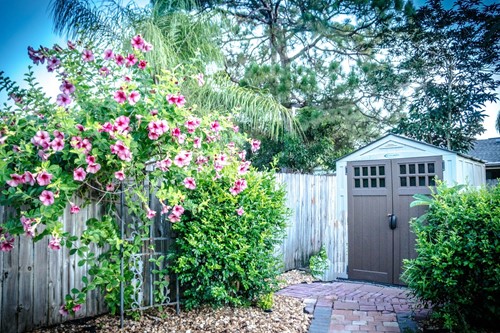Planning to Build a Shed or Outbuilding? Here's What to Do First
by Roger Schneider 11/21/2021

Outbuilding popularity exploded in recent years. Homeowners have latched on to innovative ways to utilize designs that now include front porches, lofts and solar-powered energy attached to roofs. Often resembling small houses, these buildings can be converted into large playhouses for children, workshops and a private escape.
While pre-fabricated buildings allow homeowners a convenient alternative to spending leisure hours doing construction, there are ways to lower expenses. One of the more cost-effective ways to have an outbuilding delivered is to prepare the space yourself. By avoiding some common mistakes and investing a little sweat equity, a handy do-it-yourselfer won't need to spend additional money.
Common Outbuilding Mistakes to Avoid
The idea that an outbuilding company will simply deliver the structure in a convenient location holds true. Building movers will most definitely place your new barn, shed or workshop where you tell them. It's essential to conduct some due diligence rather than endure problems afterward. Consider the following when assigning a place for your building.
- Property Lines: Local zoning regulations usually require new structures to be set back from property lines. The reasons often include things like potential fires spreading and abutters enjoying the peaceful use of their land. Check zoning regulations before placing an outbuilding. Placing one too close to the line can result in a fine and order to move it.
- Low Land: It's crucial to avoid placing an outbuilding on low ground. Such areas are likely to suffer pooling surface water. Moist ground could result in the footings sinking unevenly and frustrating your use. Consider reviewing the landscape's grade before choosing a location.
- Direct Sunlight: Outbuildings function like homes regarding heat and cold. Placing one in full sunlight can be a boon if you plan to include solar panels on the roof. But stick-built and metal structures can bake in the summer sun, turning the interior into an oven. A plan that includes oversized vents or a modest air-conditioning unit may help moderate temperatures.
When ordering a pre-fabricated outbuilding, don't hesitate to ask the building outfit questions about placement and issues common to your area. Things such as flood plains, intense wind, soil composition and other factors may influence how a structure is positioned.
How to Prepare for a New Outbuilding
Preparing a spot in your backyard for an outbuilding can range from simple to elaborate. The following are common ways you can get the space ready.
- Concrete Blocks: Big box home materials outlets usually sell concrete shed and outbuilding footings. Certain products have seams for the building floor joists or underside support to fit into them. These prefab items generally work well with relatively small sheds. Property owners measure precisely where each footing needs to be placed, tamp down the ground and set them in place.
- Timber & Gravel: If you are concerned about water pooling or pests taking up residence under the outbuilding, a 4x4 pressure-treated foundation is a good option. Level the ground and configure it so the building's outer supports sit directly on the timbers. Secure them together and recheck everything is level. Fill in the center with gravel for water filtration.
- Pour a Slab: One of the simplest and more cost-effective preparation methods involves poured concrete. A 4- to 6-inch slab with rebar ranks among the most secure ways to prep the land. Handy DIYers can dig down a few inches and set 2x4s forms for a small shed. Larger structures may require footings and the help of a construction professional.
Make sure to consider the above issues when planning your outbuilding project. It's always a property owner's best interest to discuss ground preparation items unique to your area with a professional.

